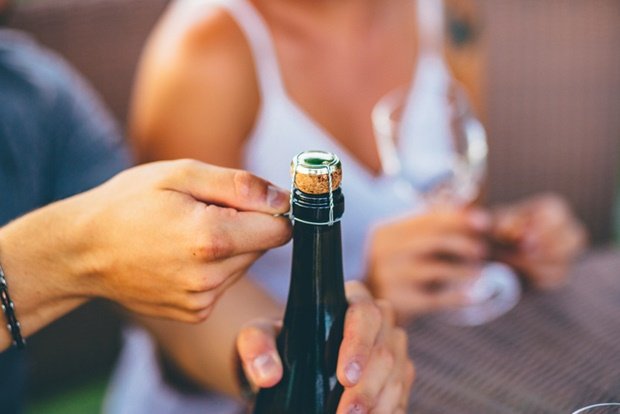Bubbly elevates any occasion. In celebration of this, we’ve compiled a bubbly 101, so you can learn a bit about this nectar of the gods. Cheers!
What kind of bubblies do we get in South Africa?
We import a lot of great bubblies, including Cava from Spain, Spumante and Prosecco from Italy, and Cre´mant and Champagne from France. We also make fantastic sparkling wine and Méthode Cap Classique (MCC) right here in Mzanzi
What are the differences between them?
Well, they’re all fizzy wines; the differences amount to origin, quality, taste and production.
And how are they produced?
Broadly speaking, there are two steps: first you need to make a base wine by fermenting grapes, and then you introduce bubbles. There are several techniques for the various bubblies, but let’s keep it local and compare our sparkling wine to our MCC.
For sparkling, the most common method in South Africa is to add carbon dioxide to the base wine, under pressure, and then bottle it. For MCC, we bottle the base wine, then add sugar and yeast so it ferments a second time. Our Cap Classique method is the same as the traditional Champagne method, arguably the most sophisticated way of producing bubbly.
So is MCC the same as Champagne?
Pretty much. The only difference is that Champagne grapes must be grown in the Champagne region of France, while we use local grapes for our MCCs.
But MCC is not the same as sparkling wine, right?
Right. MCC is superior. If you taste the two side by side, you should recognise this. They even look different: MCC (and Champagne) has smaller, more elegant bubbles than sparkling wine.
What are the different styles of MCC?
The main criteria are vintage (the harvest year), grape cultivar (the type of grapes used) and sugar level (how sweet it is).
VINTAGE vs NON-VINTAGE:
Vintage bubbly is made from a single harvest, while non-vintage bubbly is made from a blend. While vintage can be superior, non-vintage is consistent – it’s the house style you can rely on. For example, if you buy Pongrácz Brut MCC you know it’s consistently good every time, while the Pongrácz Desiderius MCC 2008 Vintage is an extra special (and limited) offering.
GRAPE CULTIVAR:
MCC is most commonly made from Pinot Noir and Chardonnay grapes, and to a lesser extent Chenin Blanc and Pinotage … but anything goes. Labels will either show the cultivar or the stylistic name, like Blanc de Blanc (made purely from white grapes), Blanc de Noir (from dark grapes) or Rosé (a blend).
For example, Laborie MCC Blanc de Blanc 2010 is made with 100% Chardonnay, Beau Joubert Blanc de Noir MCC 2013 is 100% Pinot Noir, and Villiera Tradition Rosé Brut NV is 40% Pinot Noir, 30% Pinotage, 25% Chardonnay and 5% Pinot Meunier.
SUGAR LEVEL:
In descending order of sweetness, you’ve got Sweet (or Doux), Semi-sweet (or Demi-sec), Dry (or Sec), Extra Dry, Brut, Extra Brut and Brut Nature. Most of our MCC is Brut.
Does the glass you use really matter?
Yes! Bubbly glasses are designed to best showcase the product, so put that tumbler away! Depending on your preference, use the coupe, flute or tulip. The coupe is the traditional bubbly glass; although legend has it that it was modelled on the breast of Marie Antoinette, it was designed long before her reign, when bubbly was not as fizzy as today. It’s shallow and wide, which means the effervescence escapes a bit too quickly with our modern bubbly, but it oozes sophistication.
With its small surface area and elongated body, the flute encourages the long, slow release of bubbles, so you’ll enjoy your fizz for longer. The tulip is a bit of a mix: it has the slimmer base and neck of the flute but widens out in the middle – so it develops and maintains bubbles, and focuses the aromatics towards your nose. All have stems, so that your hand doesn’t affect the temperature of the bubbly.
Want more? Catch Leah on Twitter or Instagram.
Save

